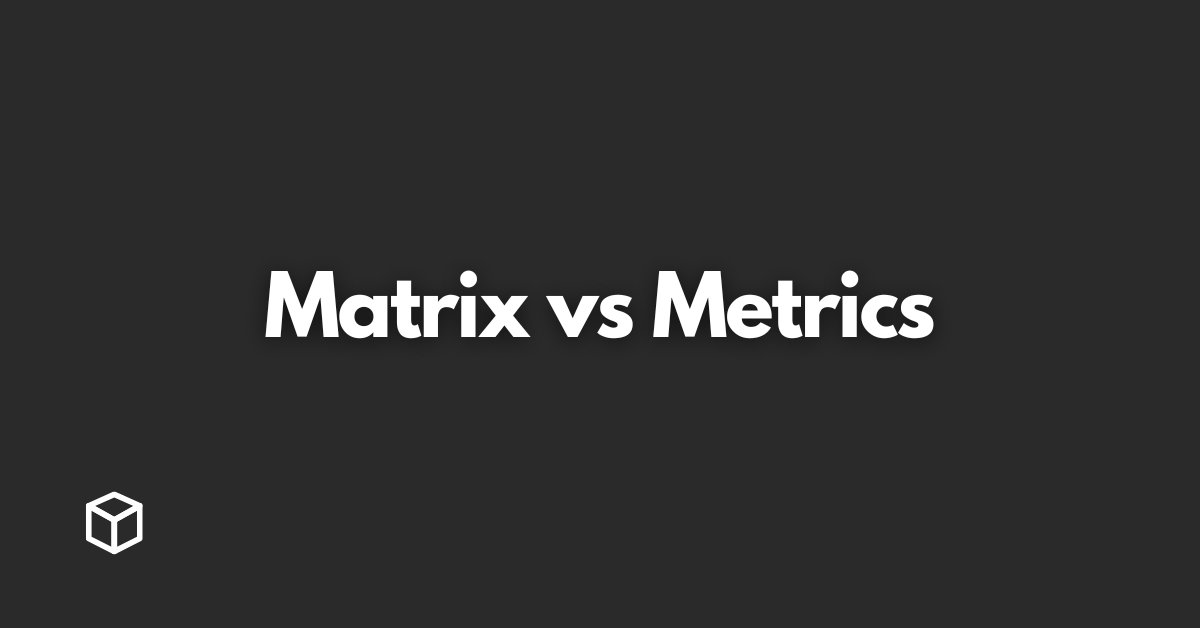In the world of mathematics and computer science, two concepts that are often used interchangeably are matrices and metrics.
However, while they may seem similar on the surface, these two concepts are actually quite different.
In this article, we will take a closer look at matrices and metrics, define what each is, and explore how they are used in various fields.
We will also compare and contrast the two concepts, highlighting their differences and similarities, and provide examples of how they can be used together in applications such as machine learning and image processing.
Matrices
A matrix is a rectangular array of numbers, symbols, or expressions that are arranged in rows and columns.
In mathematical terms, a matrix is a collection of numbers arranged in a grid format.
Matrices are typically denoted by capital letters, such as A, B, and C, and the individual elements of a matrix are denoted by lowercase letters with subscripts.
For example, the element in the first row and second column of matrix A is denoted by A12.
Matrices are widely used in various fields, such as linear algebra and computer graphics.
In linear algebra, matrices are used to represent and manipulate systems of linear equations.
They can also be used to represent transformations, such as rotations and scaling, in computer graphics.
Matrices are also used in many other areas of mathematics, such as calculus, statistics, and cryptography.
There are several different types of matrices, including square matrices, identity matrices, and diagonal matrices.
A square matrix is a matrix that has the same number of rows and columns.
An identity matrix is a square matrix that has 1s on the diagonal and 0s everywhere else.
A diagonal matrix is a square matrix that has non-zero entries only on the diagonal.
Metrics
A metric is a function that defines a distance between two points in a given space.
In mathematical terms, a metric is a function that takes in two points and returns a non-negative value that represents the distance between those two points.
Metrics are typically denoted by lowercase letters, such as d, and the two points that are being compared are denoted by u and v.
Metrics are widely used in various fields, such as geometry and topology.
In geometry, metrics are used to define the distance between points in a space, such as the distance between two points on a plane.
In topology, metrics are used to define the distance between sets of points, such as the distance between two sets of points in a topological space.
There are several different types of metrics, including Euclidean distance and Manhattan distance.
Euclidean distance is a metric that is commonly used to calculate the distance between two points in a Euclidean space.
Manhattan distance, also known as the “taxi cab” distance, is a metric that is commonly used to calculate the distance between two points in a grid, such as a city map.
Differences and Similarities
While matrices and metrics may seem similar at first glance, they are actually quite different.
Matrices are collections of numbers arranged in a grid format, while metrics are functions that define the distance between two points in a given space.
Matrices are used in various areas of mathematics and computer science, such as linear algebra and computer graphics, while metrics are used in geometry and topology.
However, there are also some similarities between matrices and metrics. Both are used to represent and manipulate data in various ways.
Both can be used to represent transformations and distances. And both can be used together in many applications such as machine learning and image processing.
For example, in machine learning, matrices are often used to represent data sets and perform calculations on them, while metrics are used to measure the similarity or distance between different data points.
In image processing, matrices can be used to represent and manipulate images, while metrics can be used to measure the similarity or distance between different images.
One example of how matrices and metrics can be used together in image processing is in image compression.
In image compression, a matrix is used to represent the pixel values of an image, and a metric, such as the Euclidean distance, is used to measure the difference between the original image and the compressed image.
This allows for the efficient compression and storage of images.
Another example of how matrices and metrics can be used together in machine learning is in k-means clustering.
In k-means clustering, matrices are used to represent the data points, and a metric, such as the Euclidean distance, is used to measure the distance between different data points.
This allows for the efficient grouping of similar data points into clusters.
Conclusion
In conclusion, while matrices and metrics may seem similar at first glance, they are actually quite different.
Matrices are collections of numbers arranged in a grid format, while metrics are functions that define the distance between two points in a given space.
Matrices are used in various areas of mathematics and computer science, such as linear algebra and computer graphics, while metrics are used in geometry and topology.
However, they can be used together in many applications, such as machine learning and image processing, to represent and manipulate data in various ways.
Additional Resources
To learn more about matrices and metrics, there are several resources available online.
For a deeper understanding of matrices, the website Khan Academy offers a series of tutorials on linear algebra that cover matrices in depth.
For a deeper understanding of metrics, the website Topology Atlas offers a series of articles on topology that cover metrics in depth.
Additionally, several universities have online lectures on linear algebra, topology, and machine learning that can be found on platforms such as Coursera, edX and Udemy.




